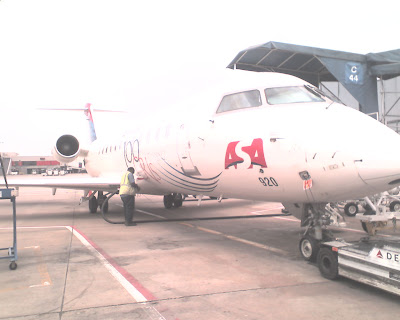Thanks to AirlinePilotCentral.com's pay scale tables I found the average pay scale for First Officers, and Captains of each of the companies that I discussed earlier this week. After that, I simply did some simple division to find out how many times these front line employee's salaries would need to be multiplied to get remotely close to the pay of the top executives that are, more or less, driving many of these companies downward.
- Skywest - CEO's Total Compensation is 52x that of an average First Officer's annual compensation and 23X that of an average Captain's annual compensation.
- Atlantic Southeast Airlines - COO's Total Compensation is 16x that of an average First Officer's annual compensation and 7X that of an average Captain's annual compensation.
- Republic Airways Holding - CEO's Total Compensation is 67X that of an average First Officer's annual compensation and 29X that of an average Captain's annual compensation
- ExpressJet Holding - CEO'S Total Compensation is 29X that of an average First Officer's annual compensation and 13X that of an average Captain's annual compensation
- Pinnacle Airlines Corp - CEO's Total Compensation is 44X that of an average First Officer's annual compensation and 15X that of an average Captain's annual compensation
- Delta Airlines - CEO's Total Compensation is 47X that of an average First Officer's annual compensation and 26X that of an average Captain's annual compensation
- United Airlines - CEO's Total Compensation is 164X that of an average First Officer's annual compensation and 84X that of an average Captain's annual compensation
- American Airlines - CEO's Total Compensation is 68X that of an average First Officer's annual compensation and 49X that of an average Captain's annual compensation
- Continental Airlines - CEO's Total Compensation is 103X that of an average First Officer's annual compensation and 75X that of an average Captain's annual compensation.
One look at United's Glenn Tilton should really start to send alarm bells ringing. Considering we are all fighting to make "Industry Standard" wages with our collective bargaining agreements, and then to see that fat cat rolling around in the cash is simply hilarious.




